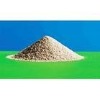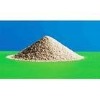- Plant Extract[39]
- Organic Intermediate[10]
- Nutrient Additives[3]
- Umbrella Stands[19]
- Chemical Projects[6]
- Chemical Reagents[10]
- Test Tube[1]
- Pipette[1]
- Laboratory Centrifuge[2]
- Other Lab Supplies[2]
- Laboratory Bottle[1]
- Swelling[1]
- Food Additives[3]
- Glial[1]
- Pharmaceutical[7]
- Polymer[6]
- Catalyst[1]
- Contact Person : Mr. Ma Yuling
- Company Name : Beijing Solarbio Science & Technology Co., Ltd.
- Tel : 86-10-86669876
- Fax : 86-10-88210286
- Address : Beijing,Beijing,Room 8108,No. 1 Building, North Lane, Beidajie,Fengtai District,Beijing
- Country/Region : China
- Zip : 100143
CIAP (Alkaline Phosphatase, Calf Intestinal)
Detailed Product Description
Alkaline Phosphatase catalyzes the hydrolysis of 5´-phosphate groups from DNA, RNA and both ribo- and deoxyribonucleoside triphosphates.
Alkaline Phosphatase, Calf Intestinal (CIAP), is supplied in 10mM Tris-HCl (pH 8.0), 1mM MgCl2, 0.1mM ZnCl2, 50mM KCl and 50% glycerol.
When the 10X Reaction Buffer supplied with this enzyme is diluted 1:10, it has a composition of 50mM Tris-HCl (pH 9.3 at 25°C), 1mM MgCl2, 0.1mM ZnCl2 and 1mM spermidine.
One unit is defined as the amount of enzyme required to catalyze the hydrolysis of 1µmol of 4-nitrophenyl phosphate per minute at 37°C in 1M diethanolamine, 10.9mM 4-nitrophenyl phosphate, 0.5mM MgCl2 (pH 9.8). See the unit concentration on the Product Information Label.
For long-term storage (infrequent use; 12 times per month), store at 70°C. For daily/weekly use, store at 20°C. Avoid multiple freeze-thaw cycles. See the expiration date on the Product Information Label.
To test for endonuclease activity, 1µg of Type I supercoiled plasmid DNA is incubated with 5 units of Calf Intestinal Alkaline Phosphatase in 1X Reaction Buffer for one hour at 37°C. Following incubation, the supercoiled DNA is visualized on an ethidium bromide-stained agarose gel to verify the absence of visible nicking or cutting.
pGEM-3Zf(+) Vector is linearized with three different restriction enzymes, in separate reactions, to generate three different types of termini: 5´-overhangs, 3´-overhangs or blunt ends. Each microgram of cut plasmid is treatedwith 1 unit of Calf Intestinal Alkaline Phosphatase for 2 hours at 37°C, kinased and ligated. The religated plasmid is then transformed into JM109 cells that are plated on X-Gal/IPTG/Ampicillin plates. White colonies result from transformation with ligated plasmids with damaged ends. These white colonies represent the number of false positives expected in a typical cloning experiment. Enzymes that generate overhangs must produce fewer than 2% white colonies, and blunt-cutting enzymes must produce fewer than 5% white colonies.
To test for nuclease activity, 50ng of radiolabeled DNA or radiolabeled RNA is incubated with 5 units of Calf Intestinal Alkaline Phosphatase in 1X Reaction Buffer for one hour at 37°C, and the release of radiolabeled nucleotides is monitored by scintillation counting of TCA-soluble material. Minimum passing specification is ≤3% release for DNase and ≤3% release for RNase.











